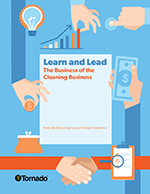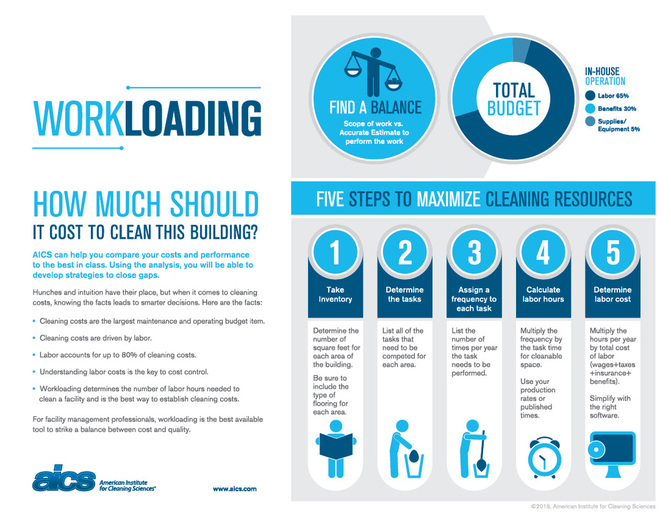Take the Guesswork Out of Estimating Cleaning Budgets
By Michael Schaffer
Estimating by Eyeballing: A Thing of the Past
With studies suggesting that cleaning consumes 20 to 35 percent of an average facilities total maintenance and operations budget, it is amazing that many industry veterans still believe it is okay to eyeball a building and proclaim how many hours it will take to clean.
As an industry veteran myself, I don’t want to dismiss the benefits and wisdom that many years of experience add, but would you forego your cell phone, simply because you didn’t have one back in the day? Of course not, so why would you do the equivalent of wearing a sign that says ‘I am a dinosaur,’ by eyeballing a facility? Truth be told, no matter how good you are at it, there are simply more reliable, and certainly more professional means today of determining how many service hours it will take to clean a facility.
In addition, I don’t care how good you are doing math in your head, unless you’re truly a prodigy, you probably can’t quickly respond in a professional manner to questions like, How does changing how often a particular task is done affect cost and cleaning results? What does a change to wages do to the overall budget? What happens if we add square footage to the area that needs to be cleaned? And, if you can answer those questions in a convincing manner on the spot, respectfully I would suggest you might be better going for the million-dollar prize on a show like America’s Got Talent, than trying to wow a building manager that has to justify a budget.
With labor costs accounting for the largest share of total cleaning costs, it is imperative today that you own your numbers and can justify every aspect of your budget, in a professional manner. Whether you manage an in-house cleaning operation, outsource services, or own a contract cleaning business, having accurate information is the key to effective management.
Have you calculated your labor cost recently?
A Successful Bidding Formula
Successful bidding is more of an art than a science. Read Tornado’s BSC advisory, designed to help building service contractors operate their businesses more efficiently.
Understanding “Workloading”
The process of workloading a facility, cleaning job, or building is today’s method for accomplishing accurate and competitive cleaning bids. Understanding the basics of “workloading” and the tools available to assist in the process is essential to today’s cleaning professionals.
What is Workloading?
For the in-house crew or the experienced contractor, workloading is an essential technique in determining the labor and expenses associated with cleaning a facility.
The Process
1. Forget What You Know:
We’re starting from scratch here so it’s best to approach the process without any preconceived ideas about estimating.
2. Calculating the Cleanable Space:
This figure is the basis for the rest of your calculations. Not to be confused with a buildings total square footage, you will need to measure the cleanable space and take into account the surfaces you will be cleaning as well as any additional surfaces that will require cleaning such as desks, furniture, etc.
3. Define the Tasks:
Break down cleaning into three categories: daily, detail, and project. Then determine the hours required to complete these tasks.
4. Determine the Cost of labor:
Once the number of hours to complete a tack is determined you can multiply this by the hourly rate of your workforce. Be sure to add such expenses as taxes, insurance, workers’ compensation, etc., if using an in-house staff.
5. Supply Costs:
Although labor costs make up a majority of your cleaning budget, don’t forget to calculate in the cost of cleaning supplies and equipment, etc.
6. Know the Tools:
Thanks to technology, new software tools have dramatically simplified and streamlined the workloading process. This software can help build a cleaning plan, measure results, help you work the plan, and improve overall operations. Some of the software can even track supplies and equipment, capture work history and employee training, and schedule cleaning tasks. Workloading reports are also excellent tools in the boardroom and president or building manager’s office when justifying cleaning budgets.
By using today’s modern tools, you can improve your chances of winning bids, making money, justifying budgets, and getting the most of your workforce.
Increase Profits & Productivity with Your Equipment
Tornado Industries does more then sell equipment. We help solve facility cleaning challenges. Let’s talk about your cleaning challenges in person.



